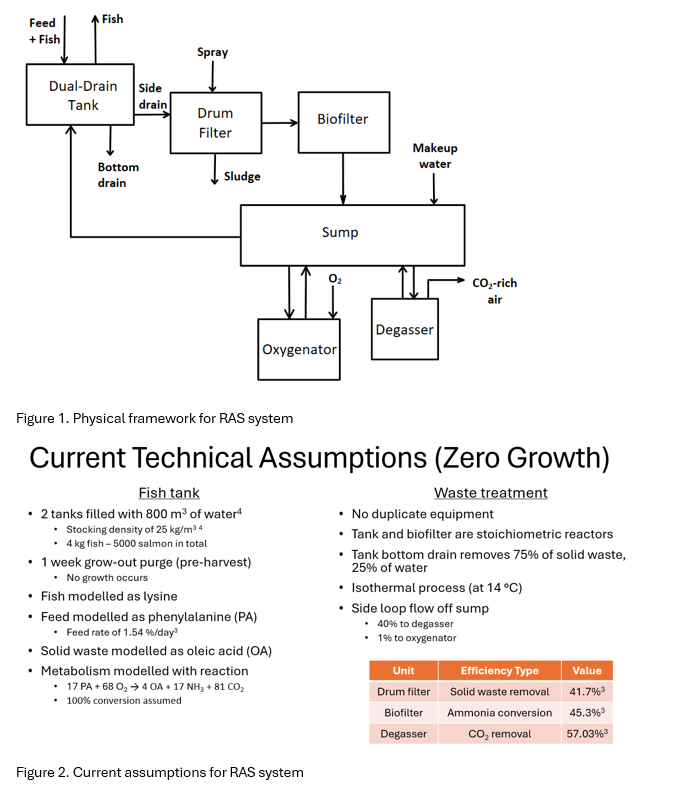The wild Atlantic salmon (
Salmo salar) population in the U.S. is now restricted to Maine waters, due to industrial and agricultural development causing habitat loss, dams, and overfishing. 90% of Atlantic salmon found in United States grocery stores is imported from an open-net pen in Norway, Chile, the United Kingdom, or Canada. In the open-net pen model, salmon is produced by raising eggs in a hatchery facility, young salmon in land-based freshwater tanks, then transferring the sea-ready smolts to net pens in coastal waters until they are harvest-ready. These open-net systems pose a high risk to their surrounding marine environment due to the free exchange of waste products, pathogens, and chemicals. Increased focus has been placed on recirculating aquaculture systems (RAS), in which fish are reared to harvest in land-based tanks, with water quality maintained and monitored with water treatment technology. This land-based system allows for year-round production in a controlled environment with reduced environmental impact and location flexibility. The primary obstacles in the commercialization of salmon RAS are the high startup and energy costs, as well as the need for a highly skilled workforce. Efforts are being made by U.S. research institutes and government facilities to stimulate the development of the national salmon RAS economy. This is being achieved by conducting research on industry and market challenges, as well as engaging in community outreach and education. To evaluate the impact of research findings on salmon RAS at commercial scale, a model is a helpful tool for quantifying these impacts on the facility’s operations, technology, and costs. In this study, a techno-economic model (TEM) and life cycle inventory (LCI) of a salmon RAS facility is produced as a platform for determining the impact of research innovations on resource consumption, environmental impacts, capital/operating costs, and business profitability.
The techno-economic model of salmon RAS consists of three components: an operational sub-model, a physical sub-model, and an economic sub-model. The operational basis is established by the facility’s throughput, size, and workflow from hatch to harvest processing. The physical framework is then defined for the facility, such as the metabolic processes, water quality standards, and equipment operating principles. The physical model is shown in Figure 1. The biomass components (fish, feed, and solid waste) were modelled as nonconventional solids, with compositional analyses from literature. The key components studied to evaluate water quality and metabolism were oxygen, nitrogen, carbon dioxide, ammonia, and nitrate (in the form of nitric acid). From this information, equipment sizing and layout is determined. The waste treatment equipment involved is the drum filter (which removes solids), biofilter (which converts toxic ammonia into nitrate), degasser (removing carbon dioxide from the water), and oxygenator (adding oxygen to the water). The physical and economic sub-models are then generated using a process simulation tool. In this project, Aspen Plus and SuperPro are used. Aspen Plus is used to generate material flows, determine operational targets for water quality parameters and material flowrates. The model is then transferred to SuperPro, where material, energy, and utility flows are generated, equipment and operational schedules are generated, capital and operating costs are estimated, and a cash flow analysis is completed to evaluate profitability. These metrics are used to inform adjustments to operating decisions and equipment configurations.

